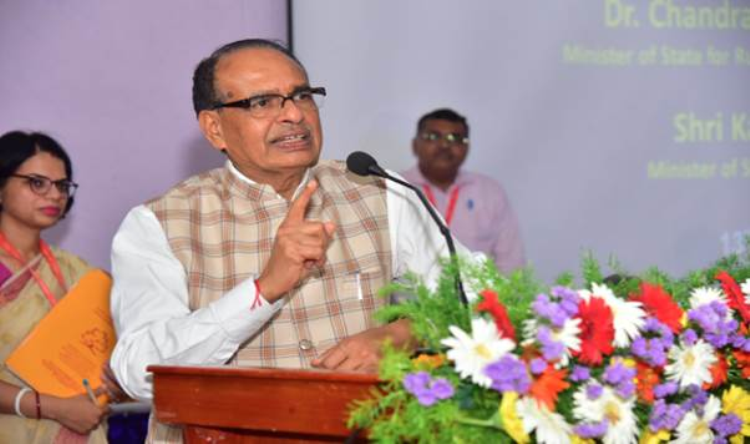Shivraj Chouhan Charts Path Toward 5% Growth, Diversification, and Farmer Prosperity
Chouhan reiterated that agriculture is not merely a sector but the backbone of the Indian economy.

- Country:
- India
In a compelling address during the Annual Conference of Vice-Chancellors of Agricultural Universities and Directors of ICAR Institutes, Union Minister of Agriculture and Farmers’ Welfare and Rural Development, Shri Shivraj Singh Chouhan, spotlighted the centrality of agricultural education, research, and extension in India’s development strategy. At a press conference following the event, the Minister laid out a comprehensive vision for India’s agricultural sector aimed at achieving a 5% growth rate and positioning agriculture as a $1 trillion pillar of the nation’s economy by 2047.
Agriculture: The Economic Bedrock of India
Chouhan reiterated that agriculture is not merely a sector but the backbone of the Indian economy. With nearly 50% of India’s population directly or indirectly dependent on agriculture, the sector currently contributes approximately 18% to the country’s GDP. Emphasizing the sector's irreplaceable role, the Minister asserted, “Agriculture will remain central to the Indian economy in the future as well.”
He underlined that Prime Minister Shri Narendra Modi’s vision of “Viksit Bharat” (Developed India) is anchored in the principle of “Viksit Krishi aur Samruddh Kisan” (Developed Agriculture and Prosperous Farmers), which now serves as the guiding philosophy for all agriculture-related institutions.
One Nation – One Agriculture – One Team
Chouhan emphasized the importance of a cohesive, unified approach among agricultural institutions to meet the ambitious targets set for the sector. He called for streamlined coordination between agricultural universities, state agricultural departments, 113 ICAR (Indian Council of Agricultural Research) institutes, and 731 Krishi Vigyan Kendras (KVKs).
“The vision is clear: One Nation – One Agriculture – One Team,” he declared, stressing that collaboration and well-defined roles across institutions are essential to realize the target of a developed India by 2047. He also praised the outcomes of the conference discussions, stating that experts have concurred that maintaining a 5% growth rate in agriculture and allied sectors is both realistic and achievable.
Bridging Productivity Gaps and Promoting Innovation
While 93% of India's agricultural land is under food grain cultivation, the growth rate for pulses and oilseeds remains alarmingly low at around 1.5%. The Minister acknowledged wide disparities in productivity across states—citing examples such as Tamil Nadu’s higher maize yields compared to lower yields in Uttar Pradesh.
To address this, the government is working to standardize productivity by bringing lagging regions up to the national average. “It’s crucial to reduce inter-state yield disparities and ensure that research and innovation are effectively translated into field-level outcomes,” Chouhan remarked.
Harnessing Technology and Modern Farming Practices
A strong push is being made to harness modern technology in order to boost productivity, reduce input costs, and improve resource efficiency. The Minister stressed the urgent need to bridge the gap between laboratory research and on-ground practices. “Research must reach the farmer in a way that is tangible and practical,” he asserted.
India’s agricultural strategy is also adapting to its changing landholding patterns. With average farm holdings expected to shrink to 0.6 hectares by 2047, reliance on traditional food grain production alone will be inadequate. Diversification into allied sectors such as beekeeping, animal husbandry, fisheries, and horticulture is being strongly encouraged.
Toward a $1 Trillion Agricultural Economy
With India aiming to become a $5 trillion economy, Chouhan highlighted that agriculture must contribute at least $1 trillion toward this goal. To achieve this, he revealed that significant emphasis is being placed on expanding agricultural exports—from the current 6% to a targeted 20%.
The government is also setting both short-term (one-year) and long-term targets to ensure consistent progress. “Time-bound goals are being established, and implementation will be swift and decisive,” said the Minister.
Genomic Innovations and Water Efficiency
In a major step toward sustainable agriculture, Chouhan expressed his gratitude to Prime Minister Modi for allocating funds to establish a new gene bank. He shared that two new rice varieties have already been developed using genome editing, and similar breakthroughs are underway for soybean, chana (chickpeas), tur (pigeon peas), urad (black gram), and pulses.
Water conservation is also a high priority, with detailed discussions underway on methods to maximize yield per unit of water. The government aims to promote technologies and crop varieties that demand less water per hectare.
A Vision Rooted in Prosperity and Sustainability
Shri Shivraj Singh Chouhan’s address reflects a visionary approach to India’s agricultural landscape. It combines traditional strengths with forward-looking policies, scientific innovations, and inclusive growth models. By uniting the fragmented elements of the sector under one coherent framework, and aligning them with national economic goals, the Minister has presented a roadmap that not only promises food security and farmer welfare but also a significant leap toward making India a global agricultural leader.










